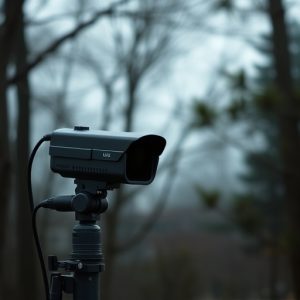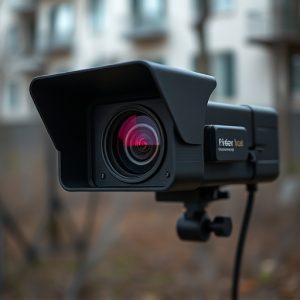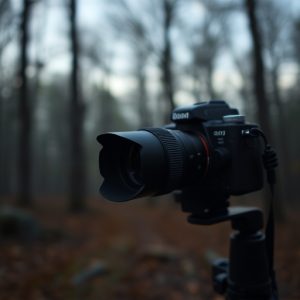Detect Hidden Cameras: RF Guide for Renters to Uncover Discrete Surveillance
TL;DR:Hidden cameras pose a serious privacy threat to renters. Radio frequency (RF) technology offer…….
TL;DR:
Hidden cameras pose a serious privacy threat to renters. Radio frequency (RF) technology offers a solution by detecting electromagnetic radiation emitted by these devices, helping users locate and disable them. Renters can take proactive steps like scanning frequencies with RF detectors to identify unique camera signatures, ensuring peace of mind in their properties. Using specialized providers for RF monitoring services allows tenants to deploy discrete security cameras effectively, recording signals and locations to prevent hidden cameras, while regular scans minimize false alarms.
Hidden cameras can pose a significant threat to privacy, especially in rental properties. This guide delves into radio frequency (RF) technology as a powerful tool for detecting these covert devices. We explore how RF works to uncover discrete security cameras and their unique signatures, empowering renters with practical steps to rent and use monitoring equipment effectively. By understanding the tech, you can ensure a safer space.
- Understanding Radio Frequency (RF) Technology for Hidden Camera Detection
- Identifying Discrete Security Cameras and Their Unique Features
- Practical Steps to Rent, Use, and Interpret Results for Effective RF Monitoring
Understanding Radio Frequency (RF) Technology for Hidden Camera Detection
Hidden camera detection using radio frequency (RF) technology has emerged as a powerful tool in ensuring privacy and security, especially for renters who want to ensure their spaces are free from discrete security cameras. RF technology works by detecting electromagnetic radiation emitted by electronic devices, including hidden cameras that operate wirelessly. By employing specialized RF detectors, individuals can uncover these hidden surveillance devices, providing peace of mind in their homes or offices.
This method is particularly useful for renters who may not have control over the installation of security systems. With RF detection, they can proactively search for and disable any unauthorized cameras, enhancing their privacy. The technology allows users to scan various frequencies to identify unique signatures associated with hidden camera transmitters, making it a discreet and effective solution.
Identifying Discrete Security Cameras and Their Unique Features
Many renters find themselves in situations where they suspect hidden cameras might be present, especially in shared spaces or recently rented properties. Identifying discrete security cameras requires a keen eye for their unique features. These cameras are designed to blend seamlessly into their surroundings, often resembling everyday objects like light bulbs, smoke detectors, or even plants. They may have a small lens and lack visible external controls, making them nearly invisible to the untrained eye.
Discrete security cameras for renters can be challenging to detect due to their advanced technology. Some models use radio frequency (RF) signals for communication, further enhancing their stealth capabilities. To counter these, renters can employ measures like checking electrical outlets and gaps around devices, examining walls for unusual markings or sensors, and using RF detectors to scan for hidden camera signals. Staying vigilant and informed about these potential threats is crucial for maintaining a safe living environment.
Practical Steps to Rent, Use, and Interpret Results for Effective RF Monitoring
When it comes to renting discrete security cameras, tenants have a powerful tool at their disposal for enhancing home or property safety. The process begins with identifying reputable providers who offer RF (radio frequency) monitoring services. These specialists will rent out equipment designed to detect hidden cameras and other surveillance devices operating within a specific radio frequency range.
Upon securing the necessary gear, users should follow practical steps for effective deployment and interpretation of results. This includes carefully scanning each room, focusing on potential hiding spots like corners, behind furniture, or near electrical outlets. Any detected signals should be meticulously recorded along with their locations to identify recurring anomalies. Regular intervals between scans ensure comprehensive coverage while minimizing false alarms. Finally, interpreting the data requires a keen eye for patterns—a sudden surge in signals could indicate the presence of an active hidden camera, prompting immediate action and further investigation.
Hidden cameras can pose a significant threat to privacy, but with the right tools and knowledge, they can be detected. Understanding Radio Frequency (RF) technology empowers individuals to identify discrete security cameras, especially those used by renters to monitor spaces. By following practical steps outlined in this guide, users can effectively rent and utilize RF monitoring equipment, interpret results, and take necessary actions against unauthorized surveillance. Staying informed and proactive is key to safeguarding personal and communal privacy.


